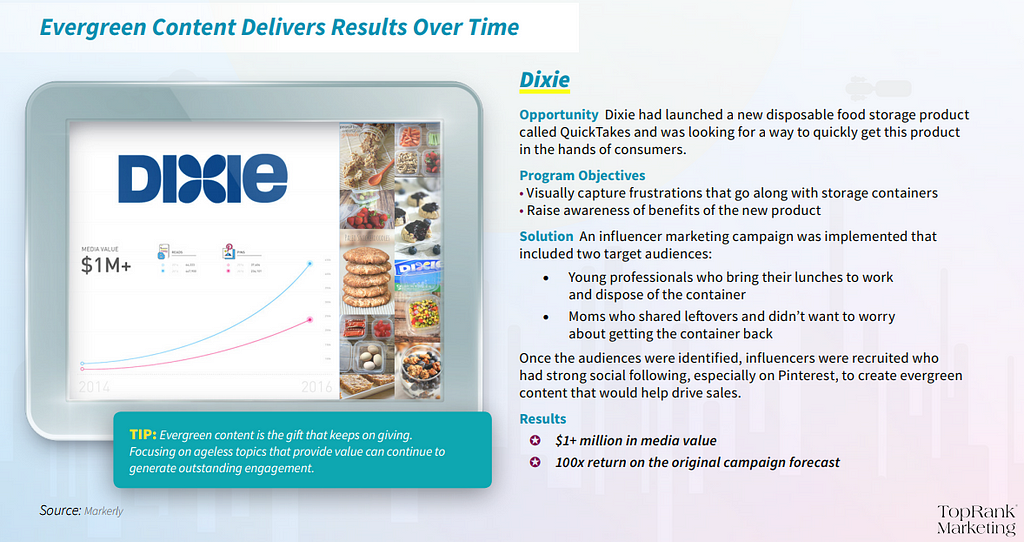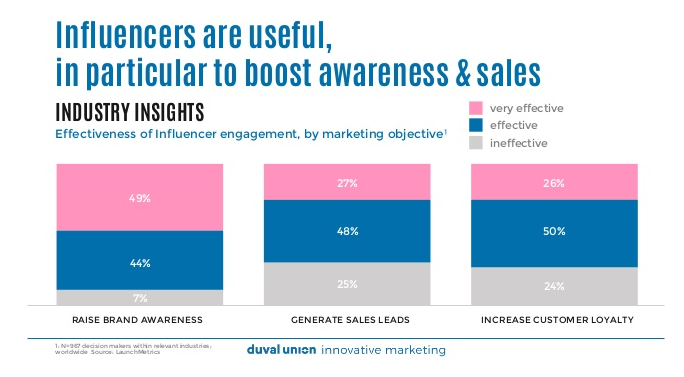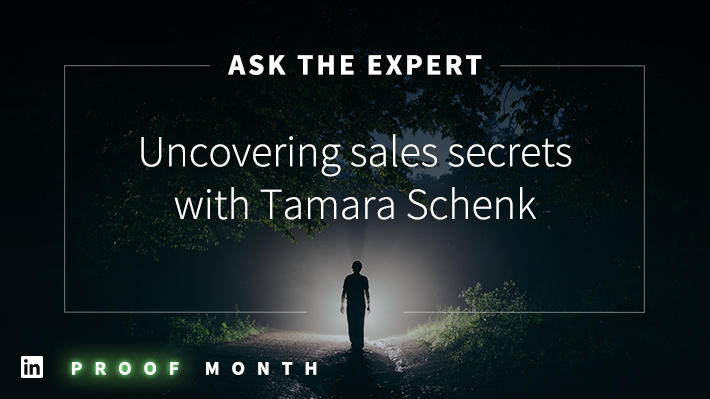Social media has entirely reshaped the way the world communicates. Instead of relying on celebrities, large news corporations and the television for world news and information, people are able to freely share, communicate and engage amongst themselves. And B2B social media marketing is part of that.
We’ve already seen huge success amongst B2C marketers, with brands consolidating a name for themselves in their target audience. However, B2B social media marketing can feel a lot more difficult to get right. When you’re targeting other businesses, negotiating a world of engagement, followers and likes can feel impossible.
Sure — B2B social media marketing does differ to marketing directly to consumers, but it nevertheless can be an extremely effective tool for your business. Effective social media marketing for B2B companies can:
- Establish your company as an authority
- Grow a dedicated, engage audience (remember, those companies you are targeting are made up of real people)
- Drive traffic and conversions.
Getting Started With B2B Social Media Marketing
First things first: you need to get onto the right social networks.
The rule of thumb here is to find a balance between establishing your business on more than one platform, but not spreading yourself so thin that you can’t really focus.
While LinkedIn remains the most popular platform for B2B marketers according to Content Marketing’s 2016 statistics, it is by no means the only platform you should be using.
B2B companies are consistently showing the impact they can have on a range of social media platforms provided they’re sharing content that resonates with their audience. A great example here is Novartis, a pharmaceutical company that has generated a large following on Instagram by sharing posts on the humane side of their work. It’s creating a genuine connection with its audience that has massively boosted the relatability of the brand.

To establish the best platforms for your company to use, take a look at your competitors’ social media accounts. As you’re in the same industry, what works for them is often what will also work for you. If you see that your competitors have managed to grow a huge audience via YouTube or Twitter, these platforms may be the best places for you to target first, because you know there’s an interested audience waiting.
Your Profiles
Your profile needs to instantly reflect your company’s brand on every social media network, and needs to be immediately recognisable.
That means using the same profile picture — ideally your logo — across all platforms, and using a consistent tone of voice. Remember: social media is where businesses can show their less corporate side, and provide content users can relate to. Keep your profile descriptions professional, but remember you’re writing to connect with people, not to sell them your CV.
Know Your Audience
Your profiles need to be created with the your target audience in mind. By this point, your company should know its values, mission statement, and the type of customers it wants to attract.
Build your profile around this aim. If you are going for a target audience of, for example, entrepreneurial-minded men in their 30s and 40s, build profiles that are designed to entice people from this pool.
Tracking
Most social media platforms provide the option to switch to a business account – for any company this is a must. This option is typically completely free, but will provide analytics to track things like:
- Engagement
- Clicks
- Followers and unfollowers.
Explore your social network settings and management dashboards to find these useful free resources.
Another key tool to use for tracking your clicks is Google Analytics. This will show you how much of your website traffic comes from social media and — more specifically — which platforms are referring visitors. Google Analytics is a must-have tool for gaining a valuable insight into your site traffic, referrals, acquisition and more.
Hiring a Social Media Manager
Successful B2B social media marketing takes knowledge, research, and commitment. It is not enough to establish yourself on a few platforms and wait for people to follow your profiles – you need to be posting fresh, interesting content that is relevant to your audience, and you need to be doing so consistently.
For many companies, this means hiring a social media manager to take charge of your accounts and strategy. You can use an existing employee for this, but remember that a successful social media strategy does take time and effort, and isn’t just a small task to add on to someone’s already busy list of responsibilities.
Content is King
Many B2B companies fail with social media because they think one of two things:
- “Social media is another opportunity for more leads”
- “Our industry is too boring for social media”.
Both of these are total myths. Any B2B company can and will be successful on social media with a proper strategy and content that actually engages your audience.
A company that constantly posts nothing but calls-to-action and links to services isn’t going to build a large following very easily. IBM’s Twitter account is a great example of how sharing content that interests your audience can be extremely effective — more so than broadcasting your services continuously.

The company’s strategy is to:
- Sharing news relating to its industry
- Share news stories involving IBM
- Interest the audience and encourage them to share, retweet and engage.
This is far more effective than constant posts linking back to IBM’s services. B2B social media marketing is about building a brand – not about driving sales.
This is the most important thing to keep in mind when planning a social media strategy. You don’t want to appear to be a faceless corporation doing nothing but trying to sell services to other companies. Social media is your chance to give your company a personality, to connect with your target audience, and to establish yourself as a known name within your industry.
So, how to do this?
By creating quality content that interests your target audience.
When creating content, think WIIFM? Your target readers will only click a link if there is something in it for them. Aim to create an emotional connection with posts that benefit your reader, not your company.
Your target audience isn’t a large corporation. It’s a business owner. A real person who wants to save money, boost productivity, and make his or her office a better space for employees to work in. Consider hiring a professional business blogger to improve the clarity of the blog posts that you’re linking to and really promote the benefits of your brand to your key audience.
Long-form vs Short-form
There are varying opinions when it comes to long-form vs short-form content. When it comes to blog posts, typically the longer and more informative a post is, the better it’s going to do on SEO and with readers actively searching for answers.
However, when it comes to B2B social media marketing, keeping your posts short and snappy is more effective. This comes down to the basic principle of readability. Use copy that is ambiguous enough to intrigue your audience to click your links, or that is going to stand-out in their news-feed. While long-form blog posts are ultimately more useful to your audience, paragraphs of text isn’t always welcome on their social media feeds.
Humour
Social media is the ‘behind the scenes’ area for many companies. This is the space where you can let your hair down and be far more social with your audience than you are on your website. Don’t be afraid to share jokes and humour with your audience. Often, these types of posts do best in terms of engagement, and make your company appear far more human to readers.
Be sure to establish guidelines when it comes to sharing humour on social media, however. There’s a fine line between sharing jokes that connect with your readers on a personal level, and sharing ‘humour’ that some could find offensive. That could harm your company in the future.
When to Share
Social media is not as simple as posting as and when you can – but you know that by now! A consistent and planned schedule to target your audience when they are at their most active and engaged is key.
It’s for this reason that automation tools are absolutely essential for any company on social media. Some of the most popular automation tools for B2B companies include:
Many of these tools offer free plans that micro-businesses can use to get started. Once you start earning ROI from your social media accounts, you can ramp up to paid plans if you need to.
Scheduling Blog Posts
Automating your blog post schedule is also a great way to help your social media marketing strategy run smoothly. Adhering to a consistent posting strategy — whether that’s twice a week, fortnightly, or monthly — will provide a stable calendar around which you can focus your social media strategy.
Keep an eye on what is popular on social media, and consider scheduling a well-timed blog post to share with your followers and drive traffic. If you hit the right nerve at the right time, your post could even go viral, which is a prize well worth persuing.
Can B2Bs Go Viral Like B2Cs?
Creating viral content as a B2B company is, admittedly, more difficult than it is for B2C companies. That’s because rather than targeting the general population, you have a more specific audience with more specific needs.
As Marketing Gizmo states, viral content is a combination of the following things:
- Luck
- Content that creates emotion
- High-Quality
- Easy to Share
Going viral isn’t an easy task, and it can often just be take an extra dose of luck for one post to take off when others don’t. The key thing to remember is to aim to connect with the people behind the businesses you want to target. Creating a human connection with your audience is what will encourage people to share and engage with your content.
When to Post
Check out this great infographic from HubSpot for the best times to post on social media. The best times to post vary depending on the platform you are using, the timezone you’re in, and even what day of the week it is. Using Hubspot’s guidance as a starting point:
- Facebook: 9am, 1pm, and 3pm.
- Twitter: 12pm, 3pm, and 5-6pm
- LinkedIn: 7-8am, 12pm, 5-6pm
- Instagram: 2am, 8-9am, 5pm.
In any B2B social media marketing project, measurement is key, and you will start to get a feel for the best times to post after a few weeks.
Interacting with Your Followers
At this point, we’ve covered the importance of using social media to show the relatable, personable side of your B2B company. A key part of this idea is then interacting and engaging with your followers, adding to the authenticity of your online brand.
Make sure you:
-
Respond to all comments you receive on your blog and social media platforms (good and bad!)
-
Monitor your feeds for related content and responding. A great example of this is when companies respond to one person’s viral story by offering them a free service in response – a great PR opportunity for the savvy brand!
Staying Consistent
It’s important to maintain a consistent tone on your social media platforms. It’s here where having one person assigned to manage your social media accounts is particularly useful – if multiple people are responding to comments on social media, your readers will notice.
Setting brand guidelines is a great way to establish what tone of voice you want your company to have, and making sure that all accounts reflect this voice. A good aim is to be friendly and relatable, but to still maintain a professional approach. It’s important to remember that your business account is not a personal space to express your own opinions.
Handling Feedback
A big fear for both B2B and B2C companies is that a customer will use social media to try to damage your reputation with bad reviews. While this can and does happen, it’s important that you have a strategy in place for dealing with such situations.
Do:
- Address all bad feedback
- Maintain a polite and professional tone
- Acknowledge your customer’s dissatisfaction and try to find a remedy.
Don’t:
- Publically accuse a customer of lying or being wrong
- Take conversations private if you need more details
- Ignore all bad reviews
- Engage in arguments on social media.
Growing Your Audience
Social media – particularly LinkedIn and Twitter – works best when users are all connecting with each other. That means following the right people to help grow your audience.
Think about the people you want to target, and the people that will be interest in your content. These two groups should be almost identical. Find them online. Connect with them, and they should follow you back.
Once you’ve built up a good number of connections, you will have boosted your chances of your content being shared by your audience.
Be careful not to be drawn into a ‘follow-unfollow’ strategy as a business, where you follow influencers and unfollow the ones that don’t reciprocate. Although this used to be a recommended tactic, you’re better off making carefully selected connections and letting your content and engagement speak for itself.
Replicate Successes
When looking to grow your audience using B2B social media marketing, one of the best places to look is at your competitors. Check out their social media accounts and see what type of content has been successful for them.
Of course, you don’t want to mimic another company and certainly want to keep the authenticity of your brand, but popular content is popular for a reason. If infographics, for example, prove particularly popular with your industry’s audience, focus on creating the best version of those infographics available.
Measuring Progress
When you are investing time and money into your social media marketing strategy, measuring your progress is essential. This is particularly important if you are going to be paying for ads on Facebook – which can be hugely successful, but can also waste a lot of money if you aren’t focused.
So how do you achieve this?
Know Your Goals
Before beginning a marketing campaign such as Facebook Ads, define clear goals that you intend to hit in your B2B social media marketing campaign. These can be things such as:
- Increasing your followings
- Increasing click-throughs to your website
- Growing your brand awareness or engagement.
Defining these goals beforehand ensure your campaign is tailored specifically to hit that mark, instead of simply hoping for undefined results.
Analyse Your Achievements and Failures
Once a B2B social media marketing campaign has run its course, be sure to analyse everything that was successful and that failed throughout the campaign. If the campaign hit your goals and beyond, you’ll know how to replicate that success in future.
Likewise, if the campaign completely missed the mark, you’ll know to reevaluate your strategy to avoid wasting money and time on similar ad campaigns in the future.
Find Leads
Leads should not always be the immediate focus of a B2B social media marketing campaign, but they are a could way to monitor your progress in the long-term. Analytics that can measure clicks, engagement and social media leads will be able to show you how much your social media campaigns have helped your business.
Social Mentions

Finally, a good way to measure and monitor your growth on social media is by using tools to track mentions, shares and backlinks to your company.
Tools for this include Mention and Google Alerts. Simply set up a Google Alert so that you will be made aware of any sites mentioning your company or your company’s social media accounts online. This is a great way of interacting with your followers, and potentially sharing outside content that positively reflects your brand.
Final Thoughts: Outsourcing B2B Social Media Marketing
A successful social media strategy can have enormous benefits for your company in terms of popularity, brand awareness and audience growth. For the best chance of success, you need to be able to commit time and some serious planning to your strategy, which is why outsourcing to a social media manager is often a better strategy for B2B companies than trying to manage your social media yourself.
Social media managers have the previous experience to set up your profiles and immediately start marketing your brand effectively – saving your company the frustrating first months trying to find the right voice for your brand and profiles.
What’s more, social media managers ensure your marketing efforts have a consolidated, clear goal. Many B2B companies assign social media to admin departments as an extra task, meaning campaigns can often be forgotten, and social media posts having a mix of messages due to multiple employees managing the accounts.
![]()

















 How construction firm Gillam Group became Canada’s Fastest Growing Company
How construction firm Gillam Group became Canada’s Fastest Growing Company
 Vets to Go is a hit with time-starved pet owners (and their furry friends)
Vets to Go is a hit with time-starved pet owners (and their furry friends)
 Bioastra Technologies uses open innovation to help firms outsource R&D
Bioastra Technologies uses open innovation to help firms outsource R&D
 Diva International grew by leading the mainstreaming of menstrual cups
Diva International grew by leading the mainstreaming of menstrual cups
 Canada Goose’s global success is built on its “made in Canada” roots
Canada Goose’s global success is built on its “made in Canada” roots
 How First Light Technologies taps its customers to make a better product
How First Light Technologies taps its customers to make a better product
 How to grow your exports beyond the usual-suspect countries
How to grow your exports beyond the usual-suspect countries
 How to get your employees to think more like entrepreneurs
How to get your employees to think more like entrepreneurs
 How to turn your brilliant idea into an actual business
How to turn your brilliant idea into an actual business
 How to turn social media engagement into real sales
How to turn social media engagement into real sales





































